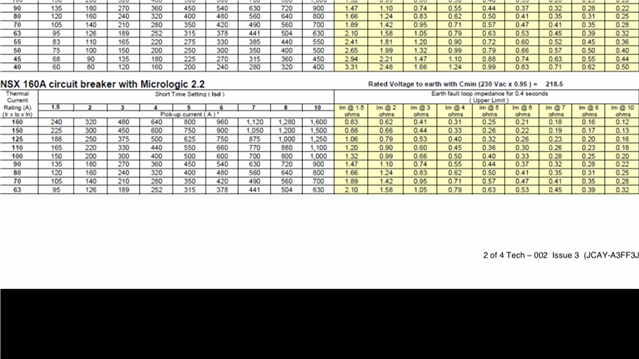One of my old customers has deciding whether to buy a big compressor that requires a 160A TP supply. He asked me to help him work out what is needed for the job to see if it is a worth doing. The site TNCS Ze is 0.23 so this will put the Zs above any 160A MCCB max limit. So I think we would have to go down the route of having earth fault protection on the MCCB to cover this.
My question is that as the compressor is inverter driven, am I going to be having issues with the earth fault tripping all the time? Or is there an alternative route I should be looking at?


